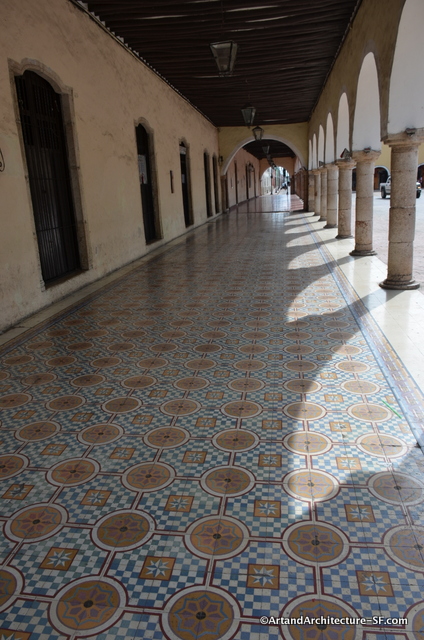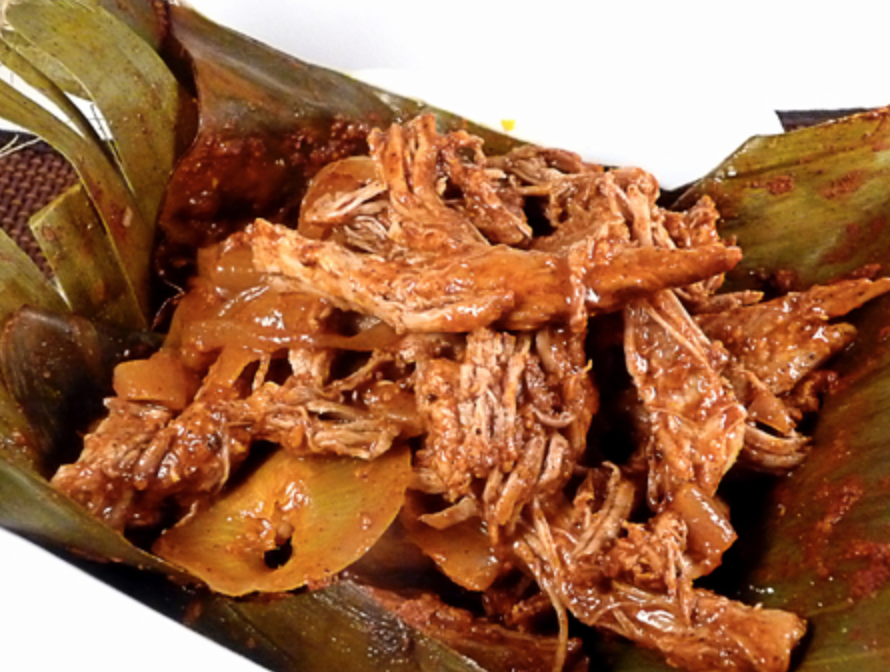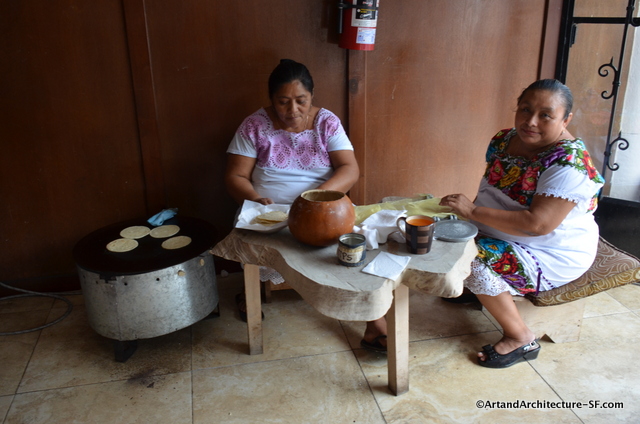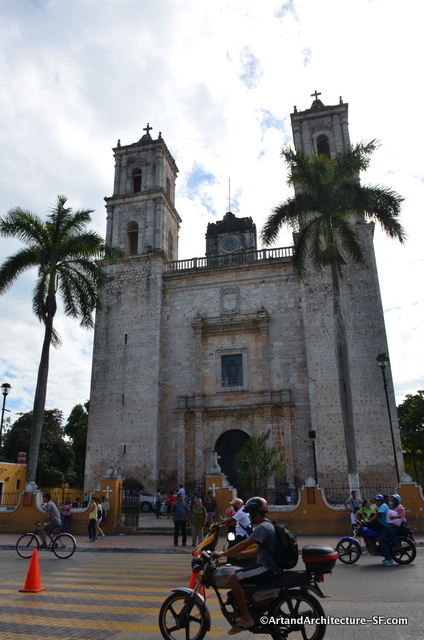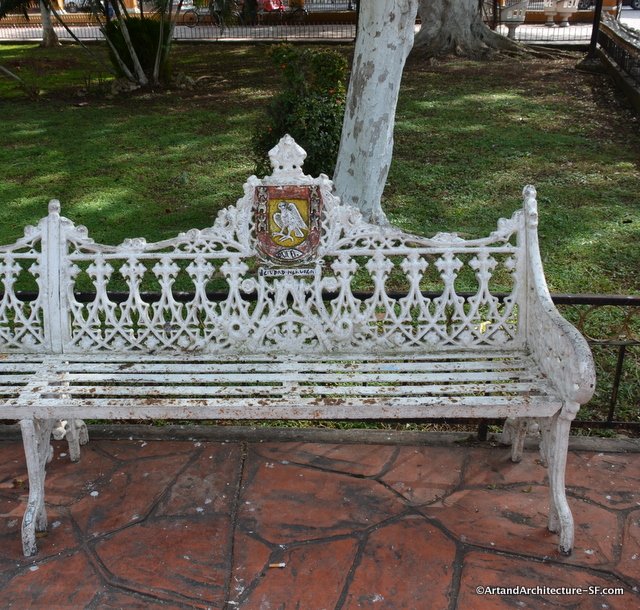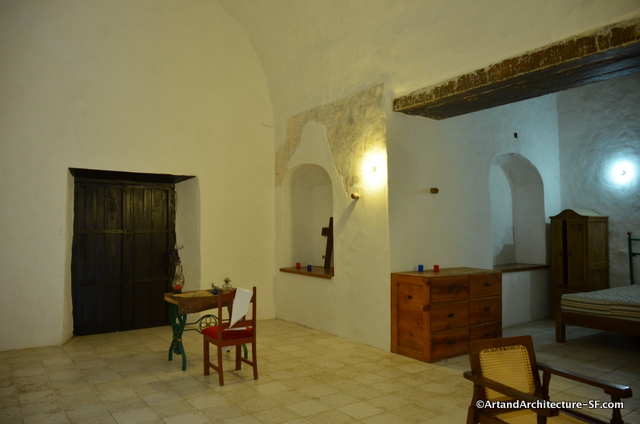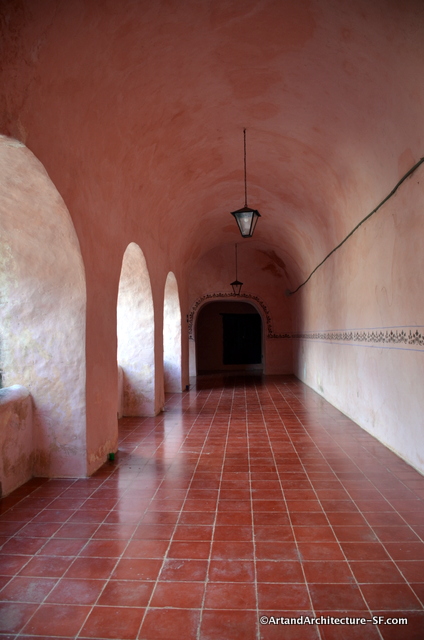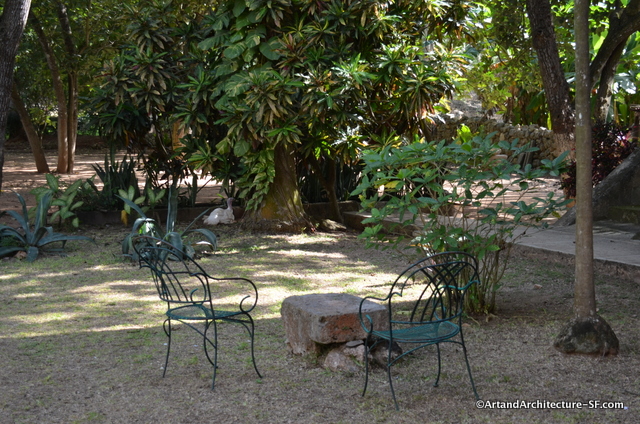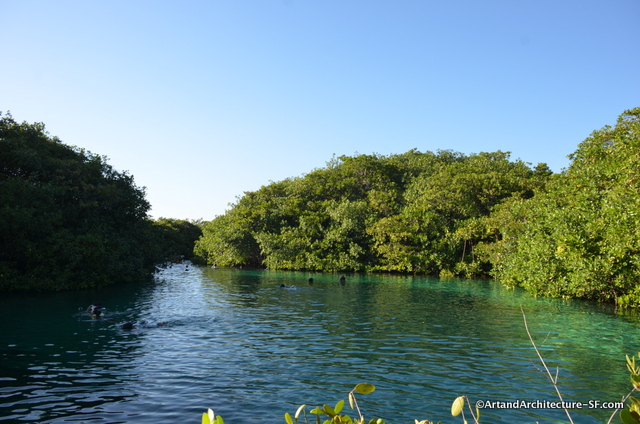We were in Valladolid for only a few hours, with the main intention to have lunch and visit the convent. That is not nearly enough time to get to know and enjoy this fabulous colonial Mexican town.
Named after Valladolid, at the time the capital of Spain, the first Valladolid in Yucatán was established on May 27, 1543. However, early Spanish settlers complained about the mosquitos and humidity at the original location, and petitioned to have the city moved further inland.
On March 24, 1545, Valladolid was relocated to its current location, built atop a Maya town called Zaci or Zaci-Val, whose buildings were dismantled to reuse the stones to build the Spanish colonial town.
I am not sure how they felt that the humidity and mosquitos would be any less intense in this new area.
In January 1847, the native Mayans rioted, killing some eighty whites and sacking their houses. After a Mayan noble was shot by firing squad, the riot became a general uprising. The city and the surrounding region was the scene of intense battle during Yucatán’s Caste War, and the Latino forces were forced to abandon Valladolid on March 14, 1848, with half being killed by ambush. The city was sacked by the Mayans, but the Spanish eventually regained their claim.
Until the beginning of the 20th century, Valladolid was the third largest and most important city of the Yucatán Peninsula.
There are many wonderful spots to eat in Valladolid, but we decided to eat with the locals. This is the best place to experience the native food of the Yucatan.
Among other delicious things we dined on puerco pibil (also cochinta pibil or cochinita con achiote) a traditional slow-roasted pork dish of Mayan origin. Due to the heat of the area, food is in a constant war with spoilage. The pibil is in response to this. Preparation of traditional cochinita or puerco pibil involves marinating the meat in strongly acidic citrus juice, seasoning it with annatto seed which imparts a vivid burnt orange color, and roasting the meat while it is wrapped in banana leaf. It is absolutely delicious.
There is also a lovely old hotel on the square with a restaurant in the ground floor where you can watch the women hand make tortillas.
One of the main attractions in Valladolid is the colonial era cathedral, ex-convent and church, Convent of San Bernardino de Siena. The site was named after Saint Bernardino of Siena and built by Franciscan missionaries between 1552 and 1560. It is located in the Sisal neighborhood a short 10-minute walk from downtown through lovely and colorful residential streets.
Sisal is derived from Ziiz-ha, Mayan for cold water.
The reason the church was built outside of town was the presence of a large cenote. A cenote (pronounced say-NO-tay) is a natural pit, or sinkhole, resulting from the collapse of limestone bedrock that exposes groundwater underneath. The church was built upon the cenote.
A recent underwater excavation of the cenote revealed weapons and munitions discarded during the War of the Castes in the mid-19th century. These items along with photos and excellent explanations of the area and its history can be seen at the on-site museum.
The exterior yard was full of turkeys. One of the most famous Yucatan meals is the Relleno Negro (Black Stuffing) also called Chilmole– This is turkey, pork or chicken cooked in a black chilmole/recado negro spice blend sauce. Not to be confused with mole sauce from the northern parts of Mexico.
Cenotes exist all over the Yucatan. Some cost money for entry, others do not. You will find some out in the open and some you need to either drive long distances and then hike into or hike down through cliffs to enjoy the cenotes that are underground.
If you have the time, take a bathing suit and head to a cenote, you can also canoe or scuba dive in many of them.

